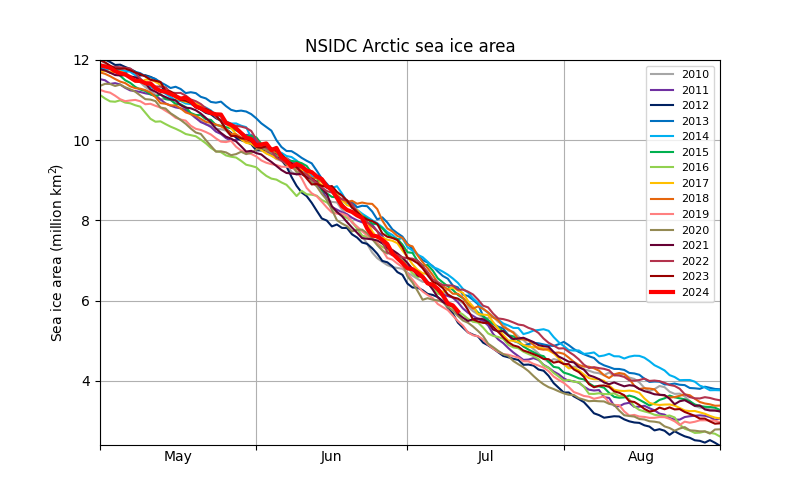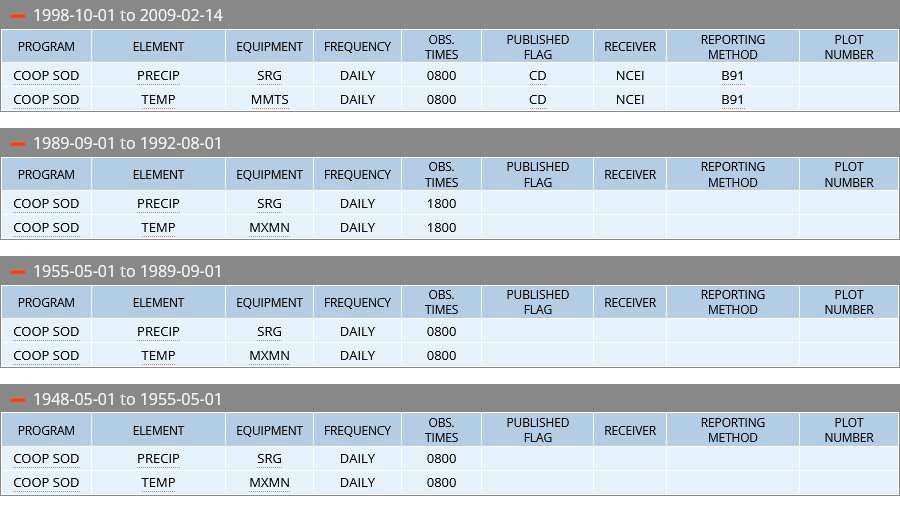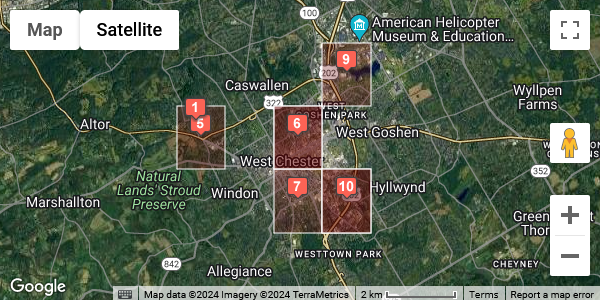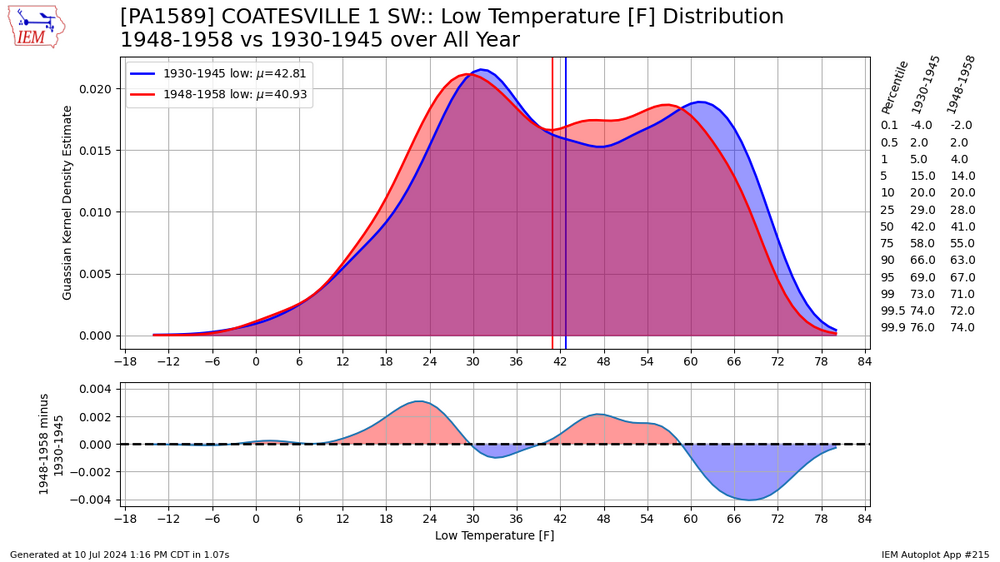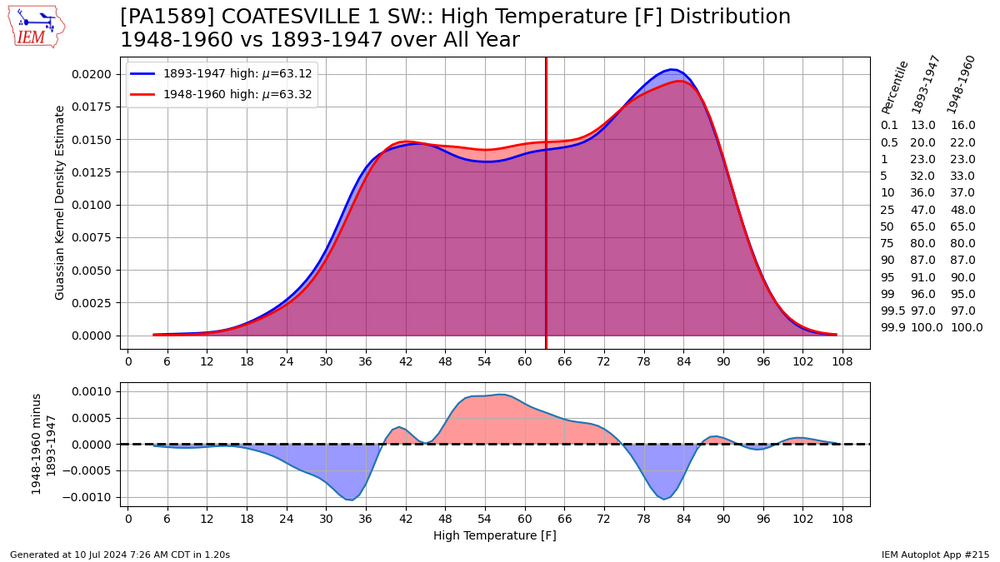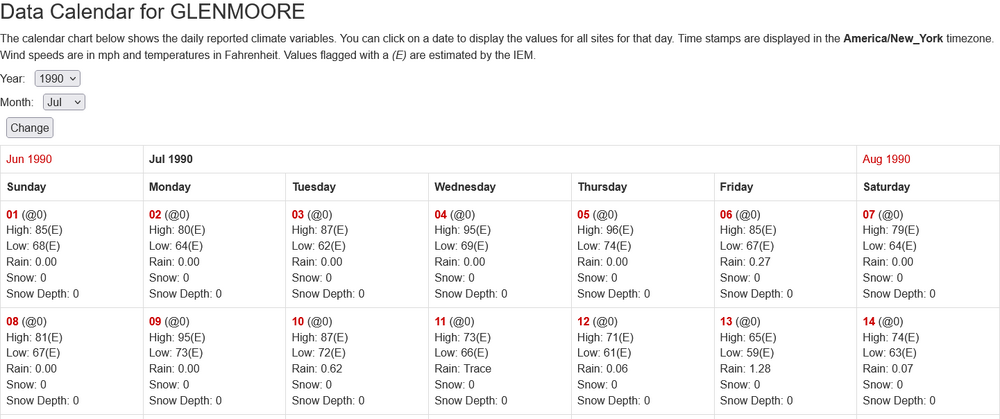
chubbs
Members-
Posts
4,041 -
Joined
-
Last visited
Content Type
Profiles
Blogs
Forums
American Weather
Media Demo
Store
Gallery
Everything posted by chubbs
-
Yes, NOAA makes perfect sense when you compare to nearby stations and factor in station moves. To say nothing about regional and global warming.
-
Won't be able to check till I get back from shore.
-
The guy is a denier, not a climate scientist, who has been dismissing CO2 GHG warming for years. Now he is touting GHG warming from water vapor in the stratosphere. I don't think so. He lost me right at the start with handwaving arguments, so I didn't bother to read. The blog below gives a good update on HT from a scientist. Note the part on the minimal importance of GHG effects in the stratosphere vs troposphere, based on calculations not handwaving. The water from HT went into the wrong spot to cause much GHG warming. The mid and upper troposphere is also very dry and far from greenhouse saturation, but there is much more material to radiate outwards in the troposphere because pressures are much higher. In other words, the para that you quoted above about the troposphere vs stratosphere is complete BS. https://www.theclimatebrink.com/p/the-climate-impact-of-the-hunga-tonga
-
Here are the local temperatures before and after the West Chester move in 1970. The move to a more rural location dropped West Chester temps close to Coatesville and NOAA. Looks like a reverse heat island effect impacted 2 of the 3 main Chesco COOP stations.
-
Not clear? ALL THE BIAS ADJUSTMENTS ARE MADE TO THE STATION DATA. Stations have adjustments, not counties, not states, not climate divisions, etc.. I showed you how to access the station adjustment information upthread. Not the first time either. Answering a previous question, I posted the Phoenixville chart below about a month ago; and got a very snide response. There are two main periods with Phoenixville adjustments: the warm spike in the mid 20'th century, that we have already identified and a cool period in the 1980s and 90s. West Chester (also below) appears to be similar to Coatesville, with a likely move-related cooling. The last move to a suburban site occurred in 1970. Since that time bias adjustments have been minimal. The only exception is a big spike around 1990, when the time of observation changed. The bias adjustments that we have investigated are justified and accurate. The past months deep dive into Chesco's climate data has left NOAA smelling like a rose. Thanks for kicking it off. https://data.giss.nasa.gov/gistemp/station_data_v4_globe/
-
Could you elaborate on the strong PV. Haven't been following since last winter to be honest. Is there any relation to the current melt season which has accelerated from slow to fast in the past couple of weeks or are they completely (Doesn't appear to be).
-
Here is the raw and bias-adj values for Coatesville 1SW. Bias adjustment starts today and works backward, so the Doe Run Road site sets the baseline for Coatesville 1SW. Bias adjustments are small for Coatesville 1SW after the move to a rural site in 1948. Note there are some small cooler adjustments in the 1970s. Before 1948 the bias adjustments are variable, reflecting the many moves and other station changes, but generally increase with time. The adjustments are largest for the 1893 to roughly 1920 period. This agrees well with the 95F+ chart I posted earlier and other charts I have posted over the years in various forums. Coatesville has more hot days in that period than other stations in this region, including stations outside the county in warmer locations, like Philadelphia. Per your question, sounds like you are still having problems understanding NOAA's methods, despite my previous explanations. Here is one more attempt. ALL THE BIAS ADJUSTMENTS ARE MADE TO THE STATION DATA. There are no further adjustments once the station adjustments have been made. THE OLDER COOP STATIONS ARE IN WARM LOCATIONS. Not surprising that the county average is warmer than the station results. The same thing occurs today. Phoenixville is always warmer than the county average. After the stations have been bias adjusted, NOAA maps the station values to a 5 by 5 km grid across the country. At this point the County boundary has not played any role. Why would it? The atmosphere doesn't care about the county boundary. Only at the very end are values for the county, climate division (SE PA Piedmont), state, etc, calculated from the 5 by 5 km gridded values.
-
And there is more. Per NCDC, West Chester also changed the time of observation. At 8AM between 1952 and 1989, at 6PM between 1989 and 1992, and at midnight when a digital system was installed in 1998.
-
Per NCDC, West Chester also had several station moves. The map and station list below are screenshots from the NCDC site. Unfortunately there are no street addresses and the location information is only approximate. The West Chester station moved within the Borough of West Chester and nearby suburbs. Like Coatesville the last station appears to be the least rural (#1,#5) in a residential neighborhood just outside of town.
-
Thanks for the map. The rest of the response is short on evidence. Lets get into it. First a couple of comments on the map. NCDC shows 6 sites, while you show 5. Perhaps that is why you don't show any site for 1947. Also several of your city locations don't match the street addresses listed by NCDC and posted above. Not sure that the details are that important. The last site from 1948-82 on Doe Run road is clearly more rural than the other sites. “Overall siting looks pretty consistent over a very short distance” No need to guess. Google earth shows the sites are different. We can see the impact of the moves in the observed temperatures. The timing of the moves after the war coincides with temperature changes. “It looks like the “warmest” relative observing site very well might have been the one near the steel mill plant from 1917 to 1930” Again no need to guess. The observations at Coatesville and nearby sites can provide a ranking. . I haven't taken a close look at it yet, except to see that the rural site is noticeably cooler. I've been telling you for years that Coatesville cooled relative to other sites after the war. “Overall all of this Coatesville data observation moves clearly did not have much of an impressive impact on these stations and more importantly on the overall averages for Chester County overall” A meaningless word salad. Its clear that the moves after the war had an impact on measured temperature that would also change your network average. Again you don't have to guess, just compare 1945 and 1948. More importantly the moves within and outside the city of Coatesville reinforce the evidence that has been piling up for weeks. You aren't doing a very good job of estimating Chester County's temperature change through the years. Meanwhile NOAA's bias adjustments are supported by hard evidence of changes at the COOP stations.
-
Not sure your question is relevant. Eyeballing the temperature chart Coatesville and nearby stations there wasn't any cooling in the 1940s that explains the drop at Coatesville, and the drop is mainly due to a change in low temperature. If you isolate the East Main street site by only looking at 1930-45, and, only look at the ten years after the move occurred. The night-time cooling effect is even larger. The results bounce around for other year selections but are always in the same direction. I have also added google earth views of the two sites using location info from NCDC. The sites are very different. Coatesville 1930-1945 Coatesville 1948-82
-
Here's the difference. Coatesville had two moves after the war and ended up in a more rural location. Coatesville temperatures dropped relative to other nearby stations clearly implicating the moves. Not sure why that's so hard for you to accept, you are always telling us important the urban heat island is.
-
Well, your not even close to getting our past climate right. Funny, for a guy who favors raw data you don't show us much. Just your network averages. There's a wealth of information in our raw coop data, that you are missing. For instance at Coatesville, when the station moved to a more rural area in 1948 the nights got cooler but the days stayed about the same. A nice example of the urban heat island effect.
-
The nino put us on the elevator up, and the escalator down. Still too early though to see what floor we are going to end up on.
-
You owe NOAA an apology because you are closer to NOAA now. You are putting lipstick on a pig. Sure DEOS has a nice network. I look at it all the time to check local temps. Doesn't tell us anything about Chester County's past climate though, a poor match to the COOP stations. You seem to have a hard time recognizing that: Phoenixville, the city of Coatesville, and West Chester are warmer than your current network and the county as a whole. If I tried to represent the county by modern stations in those locations you wouldn't be happy. Oh well. Not the only thing you are have trouble recognizing.
-
Nah, just shows how bad you method is. You've made a big change in your estimate Chester County's past climate. The second one you've made this year. Since you won't give us anything beyond a list of stations. I made up a simple chart that shows the station coverage by decade. A bolded capital X is a complete decade. A small x is a partial decade. The monitoring network that you have put together is completely different that the one in 2000. Station changes increased in the 2000s and really ramped in the 2010s. The stations you have added recently, provide very little information on whether Chester County has warmed, because the don't have a long record. In fact the newer stations with longest records: your house and kmqs, match NOAA's warming rate. With the method you are using, all the new stations do is skew the recent decades cooler vs the old network. You aren't accounting for changes in station characteristics. The new stations are higher in elevation, further N and W, and located in parks or other public area i.e., more rural than the older stations. Even when they are close to the location of older stations they aren't a good match. Take West Grove for example. The current station is at the top of the regional landfill well N and W of West Grove. Per your daily reports, the new West Grove station runs as cool as your house on summer afternoons, rarely hitting 90F. For long term-climate purposes we are stuck with a handful of stations. Four stations make up the bulk of the data: Phoenixville, West Chester and Coatesville (2 stations). If you want to look at raw data and argue that it hasn't warmed. Those are the stations you should focus on. The past couple of weeks have only strengthened my conviction that NOAA is spot on. We've found out the Phoenixville was a furnace in the 1930s-1950s, with a poor shelter and time of day bias, much warmer than nearby stations in or out of the county. Coatesville evidently moved from the city of Coatesville to a more rural location in the late 1940s, dropping temperatures by roughly 2F. Bias adjustments for those 2 stations are completely justified and accurate. I've always wondered why Coatesville cooled in the late 40s, now I know. Bottom-line the more we find out about your analysis the worse it looks, complete BS. You owe NOAA an apology.
-
Unfortunately IEM doesn't provide enough warning that the data is estimated. Fooled me until last week. Found this statement on the IEM reanalysis page that provides some info. All the COOP stations are "long-term tracked climate sites".
-
I've had a chuckle over the past couple of pages. As usual you are jumping to the wrong conclusion. The temperatures with an E flag are estimated by IEM. Says so at the top of the data tables. As an example below is Coatesville 1E for the same month. Whenever there is coop station in operation, but without temperature data, IEM dummies in temperatures from their own reanalysis program. Has nothing to do with NOAA or "ghost" stations. Just IEM's attempt to provide a temperature estimate for that COOP location. In any case, there is no temperature data at several of the sites you were using. When you pull the stations, your monitoring network average will change. Hopefully you will issue corrections to all the charts you have posted with a suitable mea culpa.
-
This chart compares UAH6 to the previous version, UAH5. The UAH6 warming rate has increased to almost match the UAH5 rate at roughly 0.15C per decade. When UAH6 first came out in 2015 the initial warming rate was only 0.106 per decade (faint blue line). Quite an acceleration in warming, surprised Roy hasn't mentioned it.
-
Per NCDC, the Glenmoore temperature data was deleted because it didn't meet NWS standards. Looks like the temperature sensor was added in 2009. Honey Brook, Chadds Ford, and West Grove prior to 1963 all get the E flag at IEM. Per NCDC only rain gauges were present. I don't think there was any temperature data at those stations.
-
Below is the the IEM data table for July 1990. IEM flags temp as E for estimated. E flag is explained in header. Can't find any IEM data for Glenmoore that doesn't have an E flag. Same for the other sites I mentioned. Based on what I see at NCDC and IEM don't think there is any temp data for Glenmoore or the other sites with an E flag.
-
No pain at all. You aren't producing any evidence and I am used to your rhetoric. I have a question about the coop data. Researching station histories at NCDC, several coops are shown as having rain gauge data only, no temperature data. Chadds Ford, Glenmoore, and Honey Brook have no temperature data at all. West Grove only has temperature data from 1963 to 1976, rain gauge only before that. I had obtained data for those stations from IEM; but, on checking, the IEM temperature data is flagged as “estimated” in the station data table. Apparently IEM backfills from surrounding stations when coop data is missing. Looks like historic Chester County data is even more limited than we thought. Can you check?
-
Sorry Paul. More data is your hands results in a poorer analysis and a loss of the warming signal. Why? You don't know how to analyze it. More data in NOAA's hands results in a better analysis. NOAA is using much more data than you are.
-
You aren't listening. Averages of an ever-changing network are skewed, doesn't matter how you tweek them..
-
Now that I've found out about the station moves at Coatesville. It is likely that the relative cooling at Coatesville after the war is caused by the station move to a more rural location. Per NCDC, there are two post-war station moves: one in early 1946, and a second move in 1948. After 1948, NOAA matches the Chescowx (two Coatesville stations and East Nantmeal) closely. This is raw coop data from 2 Coatesville stations and Pauls's house in East Nantmeal. All relatively rural after 1948. Before 1948, NOAA matches the bias-adjusted values for Coatesville. Per chart above the Coatesville experienced a city-->rural move related warming that deserves a bias adjustment. As shown a few posts up, Coatesville had more 95 days than Phiadelphia before the move. More strong evidence that NOAA is spot on and Chescowx is way off.




.png.082bfd3e2825f51098f251c53b035084.png)

